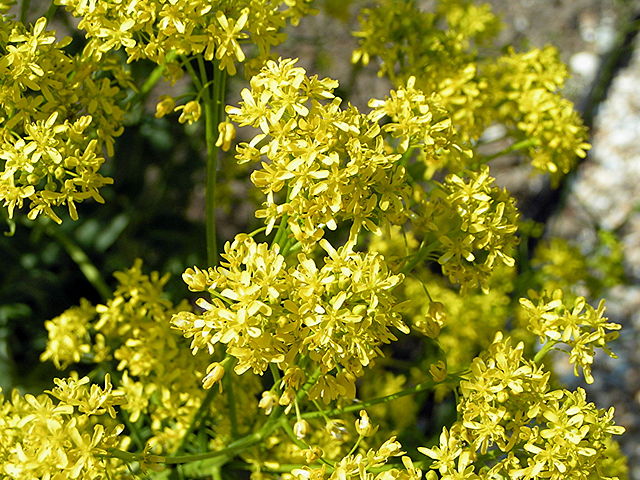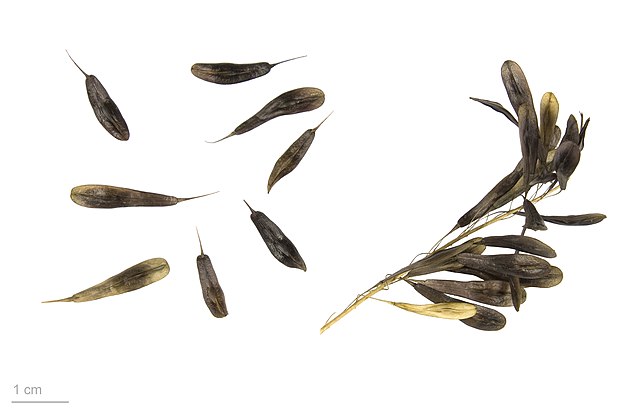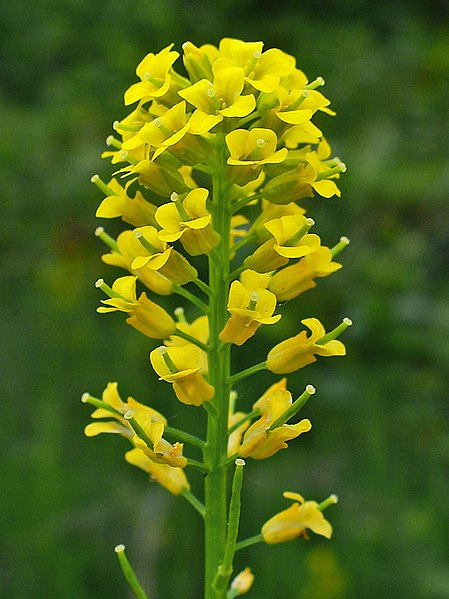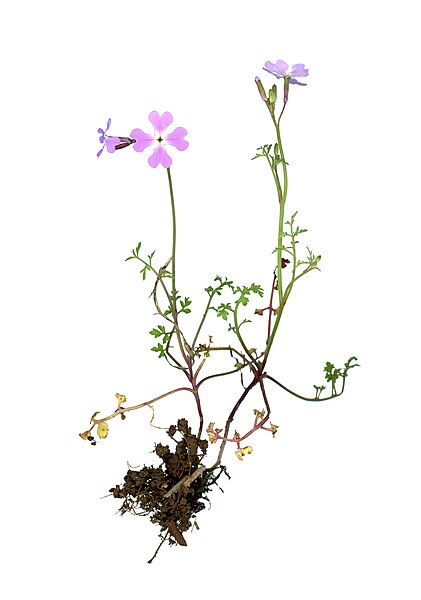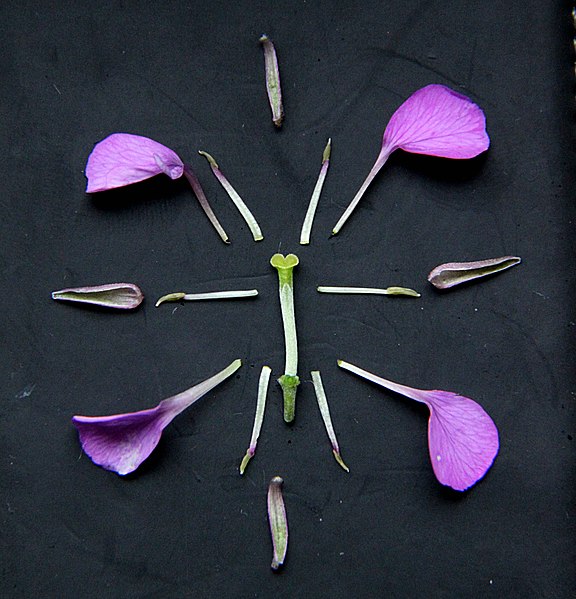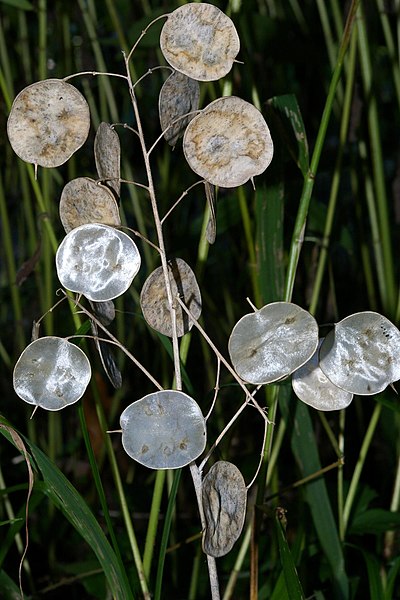Isatis tinctoria, also called woad, dyer's woad, dyer's-weed, or glastum, is a flowering plant in the family Brassicaceae with a documented history of use as a blue dye and medicinal plant. Its genus name, Isatis, derives from the ancient Greek word for the plant, ἰσάτις. It is occasionally known as Asp of Jerusalem. Woad is also the name of a blue dye produced from the leaves of the plant. Woad is native to the steppe and desert zones of the Caucasus, Central Asia to Eastern Siberia and Western Asia but is now also found in South-Eastern and Central Europe and western North America.
Isatis tinctoria
Woad plants
Fruits of Isatis tinctoria
The tapestry series The Hunt of the Unicorn (here No. 6: The Unicorn is Killed and Brought to the Castle, c. 1500), was dyed with weld (yellow), madder (red), and woad (blue).
Brassicaceae or Cruciferae is a medium-sized and economically important family of flowering plants commonly known as the mustards, the crucifers, or the cabbage family. Most are herbaceous plants, while some are shrubs. The leaves are simple, lack stipules, and appear alternately on stems or in rosettes. The inflorescences are terminal and lack bracts. The flowers have four free sepals, four free alternating petals, two shorter free stamens and four longer free stamens. The fruit has seeds in rows, divided by a thin wall.
Brassicaceae
Ricotia lunaria
Typical floral diagram of a Brassicaceae (Erysimum "Bowles' Mauve")
Lunaria annua with dry walls of the fruit

